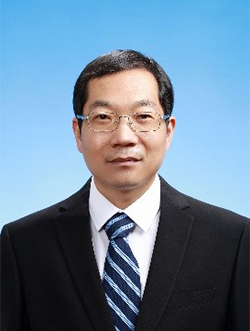THE THIRD INTERNATIONAL SYMPOSIUM
ON THERMAL-FLUID DYNAMICS 2022
(ISTFD 2022 )

THE THIRD INTERNATIONAL SYMPOSIUM
ON THERMAL-FLUID DYNAMICS 2022
(ISTFD 2022 )

Liangyu Zhao
School of Aerospace Engineering, Beijing Institute of Technology, Beijing 100081, P. R. China
E-mail: zhaoly@bit.edu.cn
Dr. Liangyu Zhao is currently an Associate Professor with the School of Aerospace Engineering, Beijing Institute of Technology. He received the bachelor’s and Ph.D. degrees from the Beijing Institute of Technology, Beijing, China, in 2003 and 2008, respectively. He worked as a post-doctor from 2009 to 2010 in Hanyang University, South Korea. He joined Beijing Institute of Technology as a Faculty in 2010. His research interests include flight vehicle design, Navigation Guidance and control, System integration and simulation, and aerodynamics. He has published more than 60 papers in journals and conferences. He was the co-chair of the first International Symposium on Thermal-Fluid Dynamics (ISTFD 2019), and the chair of the second International Symposium on Thermal-Fluid Dynamics (ISTFD 2021). He is also the co-chair of the third International Symposium on Thermal-Fluid Dynamics (ISTFD 2022)
Title: Some Achievements Related to Numerical Simulation of Spinning Rockets
Abstract:With the advantages of simpler control system and cheaper manufacturing costs, research on spinning rockets is always active in many countries. However, compared with traditional non- spinning rockets, rotating rockets face a series of complex aerodynamic problems, one of which is the Magnus effect. The Magnus effect of the spinning rocket affects the dynamic stability and has an important influence on the flight trajectory. In severe cases, it will cause divergent coning motion. Therefore, it is very important to figure out how the Magnus effect varies with different parameters. In response to this topic, we focus on wall temperature, dimensionless spin rate (0 - 0.315) and angles of attack on Magnus effects for the 7-caliber Army-Navy Spinner Rocket (ANSR) using Reynolds-averaged Navier-Stokes methods. In this study, we initially obtained the variation law of the Magnus effect with different parameters. Since the simulation results of RANS can only give the time-averaged flow field information, it cannot reveal the mechanism behind these laws. To gain a deeper understanding of the mechanism behind the law, it requires obtaining a more detailed fluid structure, and large eddy simulation becomes an option at this situation. But wall-resolved large eddy simulations of high Reynolds number flow over rotating rocket would require computational resources that we cannot afford. In order to solve this problem, several topics have been raised. The first strategy is that we can simplify the geometric model and reduce the Reynolds number, focusing on the single effects of rotation and compressibility, respectively (considering that the effect of attack angle has been studied a lot, we will not go into it here). Another strategy is to use wall-modeled large eddy simulations to reduce computational resource requirements.